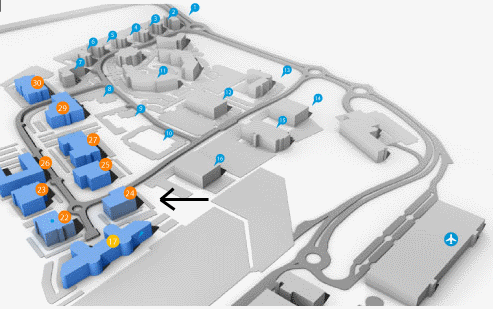Current Size: 100%
What is a cancer cluster?
A cancer cluster is an unusual number of cancers occurring during a specific time period among people who live or work together. The impression that a cancer cluster exists usually begins when someone's spouse, neighbour, or friend is diagnosed with cancer. This close contact with cancer often brings an awareness of others who have cancer and a desire to answer the question, "Why?" It is not uncommon for people to suspect the cancer cause is a chemical in the environment. Increased awareness about cancer and the search for a cancer cause may lead someone to contact the National Cancer Registry. The following cancer facts might help answer some of your questions about cancer.
Cancer Facts
- Cancer is more common than most people realize.
Cancer is the second leading cause of death in Ireland. About 30% of Irish people now living will eventually have cancer. Over the years, cancer will strike about three out of four families. Given these statistics, it is not surprising to know several people in an area or workplace who have cancer.
- Cancer is not one disease.
Cancer is a group of more than 100 diseases characterized by uncontrolled growth and spread of abnormal cells. Different types of cancer have different causes, different rates of occurrence, and different chances for survival. What turns a breast cell into breast cancer isn't what turns a white blood cell into leukaemia. Therefore, we cannot assume all the different types of cancer in a community share a common cause.
In addition, even if the cancers seem to be similar, they may not have a similar cause. Cells have a variety of genes that keep them functioning normally and it takes a combination of factors - what cancer biologists call multiple "hits"- to make a cell cancerous. One combination may be a genetic defect combined with an exposure to a cancer-causing agent (also called a "carcinogen"). Another combination may be a lifestyle factor such as smoking combined with a specific viral infection. To further complicate matters, each of these factors can be modified by individual characteristics that are poorly understood. Thus, it is possible that the cases of a certain cancer in a cancer cluster may have causes that are unrelated to each other.
- The risk of having cancer increases with age.
While cancer occurs in people of all ages, cancer rates rise sharply among people over 45 years of age. When a community consists primarily of people over the age of 45, we would expect more cancer than in a more mixed area. We would expect even more cancer if most people were over the age of 60.
- While the exact cause of most cancers is unknown, the most common types of cancer are associated with lifestyle factors.
Cancer may be caused by a variety of factors acting alone or together over many years. Scientists estimate that most cancers are associated with factors related to how we live, called lifestyle factors. Evidence reviewed by the American Cancer Society suggests that about one-third of the 550,000 cancer deaths that occur in the United States each year is due to dietary factors. Another third is due to cigarette smoking. Other lifestyle factors which increase the risk for cancer include drinking heavily, lack of regular physical exercise, promiscuous sexual behavior, and sunlight exposure. Some cancers have been associated with certain viral infections. A family history of cancer increases a person's chances of developing some cancers. Finally, occupational exposure to some chemicals increases the risk for a few cancers.
- Environmental factors account for a small percentage of all cancer deaths.
Many people believe that cancer is usually caused by exposure to toxic substances in the environment. Contrary to this belief, however, the cancers that occur most frequently are caused by lifestyle factors. We do not know the exact impact of environmental pollutants on cancer development, but scientists estimate that fewer than 10%, and probably no more than 3-4% of cancer deaths are related to external environmental factors such as radiation and toxic chemicals.
- Cancers today are usually related to events that happened many years ago.
Cancer does not develop immediately after contact with a carcinogen. Instead, there is often a long period, 15 to 30 years, between the exposure to a carcinogen and medical diagnosis of cancer. This makes it very difficult to track what caused the cancer. The cancers we see now are usually related to a lifetime of certain habits or exposure to a carcinogen many years ago. And, in a mobile society like ours, cancer victims who seem to be clustered may not all have lived in an area long enough for their cancers to be caused by exposure to a carcinogen in the community environment.
Cluster Facts
- Cancer clusters may occur by chance.
Even if there are more people with one type of cancer in a community than might be expected, we cannot assume it was caused by exposure to a cancer-causing agent in the environment. The cluster may have occurred simply by chance. There are several principles to keep in mind when investigating a cluster of cancer.
People have a tendency to see patterns in random events.
For example, in a coin toss, people assume that a sequence of 6 "heads" in a row is somehow less random than "head-tail-head-head-tail-tail." But in reality, both sequences are equally likely.
People tend to isolate a cluster from its context.
This is known as the "Texas Sharpshooter Fallacy." The Texas sharpshooter shoots at the side of a barn and then draws a bull's-eye around the bullet holes. In the same way, we might notice a number of cancer cases, then draw our population base around the smallest area possible, neglecting to remember that the cancer cases actually came from a much larger population.
To decide whether the number of people with cancer in a reported cluster may be more than expected, epidemiologists use data from national cancer registries to calculate an "expected" number of cases. They then compare the "expected" number of cases with the "observed" number of cases by performing one or more statistical tests. In making statistical comparisons - usually at a "95% confidence level" - five of 100 comparisons may be significantly different by chance alone.
A typical cancer registry tracks 80 different kinds of cancer. Using these facts, statisticians at the California Department of Health Services have calculated that there is a 98% chance that a given community will show a statistically significant but totally random elevation in the rate of at least one type of cancer. Thus, even when a statistical test shows there is a "statistically significant" difference between the observed and the expected number of cases, in many instances the significant difference is due to chance and not to a real hazard in the community.
The following references are recommended for further information on the causes o f cancer and cancer clusters:
- Trichopoulos, D. et al "What Causes Cancer?" Scientific American, September, 1996. Available online at http://www.nature.com/scientificamerican/journal/v275/n3/pdf/scientificamerican0996-80.pdf (registration required).
- Gawande, A. "The Cancer Cluster Myth." The New Yorker, February 8, 1999.
- The National Cancer Institute's website, located at thtp://www.nci.nih.gov.
- The American Cancer Society's website, located at http://www.cancer.org.
- Robinson, D. Cancer clusters-findings vs feelings. Medscape November 2002. Online at http://www.medscape.com/viewarticle/442554.
Acknowlegements
This article is based on part of a paper on cancer clusters produced by the Washington State Department of Health. We wish to thank Mr. Joseph Campo for permission to reproduce this material.





